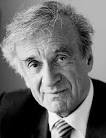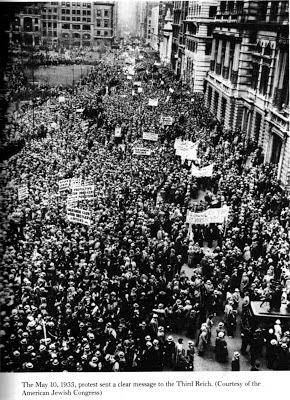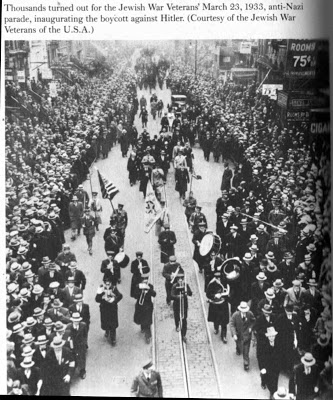strengthening the Boycott of Nazi Germany, the Yishuv (Jewish Palestine) was sabotaging it
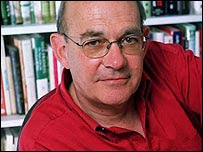
Tom Segev whose book Elie Wiesel reviewed

Before you decide to report this post to Labour’s compliance
unit, in order that they have more evidence to use for my expulsion hearing,
please be aware that this is taken from an old and excellent review below by Eli
Wiesel.
Wiesel, a winner of the Nobel Peace Prize.
He is a self-serving Zionist propagandist. The conclusions he drew from the holocaust was
that Jews must be strong regardless of how much they persecute others. He has given wholehearted backing to Israel’s
attacks on the Gaza Strip.
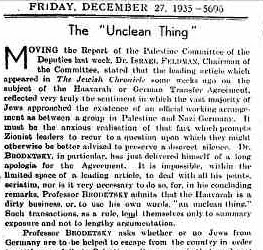 |
| How the Jewish Chronicle saw Ha’avara, the Zionist-Nazi trade agreement at the time |
community to be deported. He was a
victim of Rudolf Kasztner, the leader of Hungarian Zionism, who made a pact
with Adolf Eichmann. In return for a
train taking 1684 of the Zionist and Jewish elite to safety out of Hungary, he
would ensure that the remainder of Hungary’s Jews were pacified and misled as
to where they were being deported. They
were led to believe they were being ‘resettled’ in Kenyermeze, a place that
didn’t exist. Hungary’s Jews, but for
the collaboration of Kasztner, the Zionist ‘rescue committee’ and the Judenrat (Jewish
Council) would not have lost nearly ½ million people.
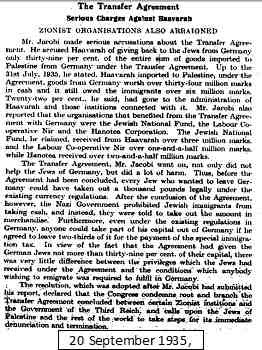 |
| Jewish Chronicle Article attacking Zionists’ trade agreement Ha’avara which broke the Jewish boycott of Nazi Germany |
just 2 weeks before D-Day, and we did not know that Auschwitz existed… everyone
knew except the victims.’ Nicholls, W. Christian Anti-Semitism: A History of Hate, London: Jason Aronson Inc., 1993 353.. Wiesel asked ‘Why
didn’t we know? To this day I try to
understand what happened. If ever there
was a tragedy that could have been prevented, it was that one.’ [“The ‘Myth’
and Reality of Rescue from the Holocaust’, p.10. citing Wiesel’s introduction
to Braham and Bel Vago, The Holocaust in
Hungary 40 Years Later (New York:
Columbia University Press, 1985), p. xiv].
excellent Israeli historian, Tom Segev’s book The 7th Million
deserves reprinting now that Ken Livingstone is in hot water for having told
the truth about Nazi support for the Zionist movement.
Tony Greenstein
The Land That Broke Its Promise : The Seventh Million: The
Israelis and the Holocaust, By Tom Segev (Hill & Wang)
was translated from the French by Marion Wiesel
Had Israel existed in 1939, would the Holocaust have been averted? Did
Israel need Auschwitz to be born or reborn? These questions have surfaced over
and over again. They are heavy with implications. I, myself, choose to view
these two events in Jewish History as mysteries linked not as cause and effect
but by chronology.
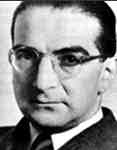 |
| Rudolf Kasztner – Hungarian Zionist leader who exchanged the Hungarian Jewish community for 1684 of the elite Zionists and Jews in Hungary |
Tom Segev, an influential columnist for the Israeli daily
“Haaretz,” is to be congratulated for the way he is treating the
issue. Daring to challenge traditional beliefs, “The Seventh Million”
is richly documented and written with great passion. Still, it is certain to
cause pain, especially to those who love Israel and harbor a romantic and
idealized image of its destiny.
What follows is not meant to mitigate the guilt of the killers and their
collaborators; nothing can ever diminish that. Still, on a different level, not
all others are beyond reproach.
Israel, for some of us, is much more than a geographical or political
notion; it is the very heart and conscience of our people. Even inside the
“Kingdom of Night,” there were inmates who dreamed of Jerusalem, who
were convinced that in Tel Aviv and Haifa, Givat-Brenner and Hulda, our
brothers and sisters were crying for us and with us. Our faith in Jewish
solidarity was total. Had anyone dared to suggest that during the darkest hours
of our history, the leaders and inhabitants of Palestine were not overwhelmed
by compassion for their deported fellow Jews, we would have dismissed him as a
traitor.
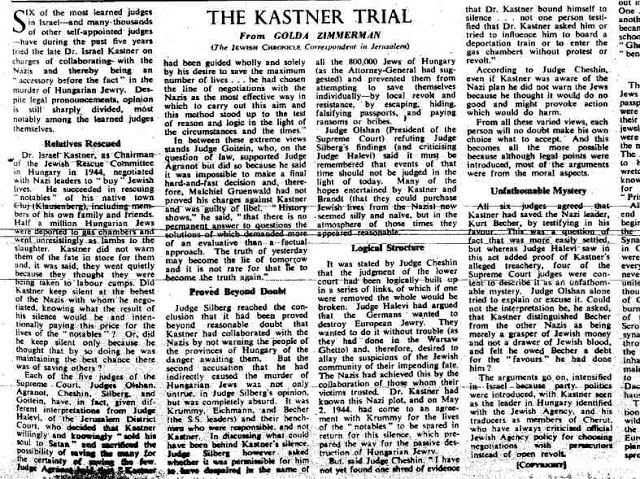 |
| Jewish Chronicle Report of Supreme Court decision in Kasztner Trial 31.1.58. |
Of course, Segev is not the first to have revealed the shortcomings of the
“Yishuv”–as the Jewish community in Palestine was then called–and
its leaders. Playwright and novelist Ben Hecht wrote a violently polemical
work, “Perfidy,” dealing with the Kastner trial in the early 1960s.
Through it, he attacked the Zionist establishment’s timorous policy during the
war and went so far as to accuse its major players of collaborating with the
Germans.
There is no comparison between Ben Hecht’s inflammatory pamphlet and Segev’s
study. The latter is sober and balanced, and therefore, all the more
disturbing. Segev tells of his torment as he gradually discovers the extent to
which the Jewish victims in Europe were let down by their co-religionists in
Palestine.
Let us examine the strange episode of the haavar or
“transfer.”
In the mid-1930s, after Hitler’s rise to power, while American Jewry fought
to organize an economic boycott of Nazi Germany, the leaders of the Palestinian
Yishuv entered into active, though unofficial, negotiations with Berlin
regarding the transfer of German Jews and their wealth–some 30 million pound
sterling–to the Holy Land.
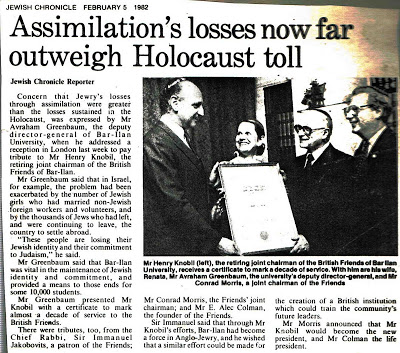 |
| The Zionists compare assimilation (Jews marrying non-Jews) to the annihilation of Jewry by Hitler |
Surely, Jewish Palestine–at the time the two words were not
contradictory–needed money to finance its development, but this brazen
pragmatism went against the political philosophy of a majority of world Jewry.
There developed a growing perception that instead of supporting and
strengthening the boycott, Palestine was, in fact, sabotaging it.
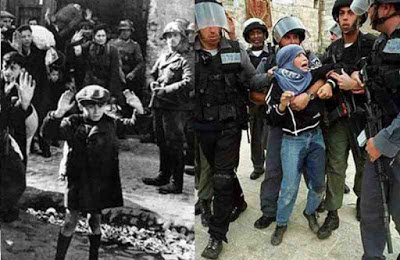 |
| A comparison of a Jewish child under the Nazis and a Palestinian child under Israel |
There were justifications. Yes, the country was poor and needed financial
input and yes, this course of action provided a chance to save German Jews who
might otherwise have decided to “wait and see” and let the last
possible opportunity of salvation go by.
But Segev goes on to show, supported by devastating evidence, that later,
even as Germany carried out its Final Solution–liquidating one ghetto after
another, one community after another–the Jewish leaders of Palestine never
made the rescue of European Jews into an overwhelming national priority. We
know that Zionist leader Itzhak Gruenbaum, a future Minister of the Interior in
David ben Gurion’s first cabinet, considered creating new settlements more
urgent than saving Jews from being sent to Treblinka and Birkenau.
Read Segev’s heartbreaking conclusion:
“There had been about nine million Jews in Europe on the eve of the
war; about six million were killed, leaving three million alive. Most of them
were saved by Germany’s defeat in the war. Some were spared thanks to the help
they received from various governments and organizations such as the Joint
Distribution Committee and from thousands of good-hearted people in almost
every country–the “righteous Gentiles.” There were dramatic rescue
operations such as the flight across the Pyrenees from France to Spain and the
convoys of Jews that sailed from Denmark to Sweden. Only a few survivors owed
their lives to the efforts of the Zionist movement.”
What follows is equally depressing. It concerns the reception accorded to
survivors as they arrived, first in Palestine, then in Israel. They were
received warmly, but, most often, with little sensitivity. They were urged over
and over again, to forget what they had experienced. People would tell them:
“The past is the past . . .,” “Let bygones be bygones . . .
.” But the survivors needed to tell their stories, if only to fulfill
their obligations toward the dead.
needed to bear witness and no one wanted to listen. Except if the stories
glorified Jewish heroes and partisans. The proud citizens of Eretz Israel
did not want to hear about the suffering, the oppression, the agony, the
humiliation of hundreds of thousands, of millions of their own people. It was
only after the trial of Gestapo head Adolf Eichmann that the teaching of the shoah
, a term as inadequate as the term “Holocaust,” began to be taken
seriously in Israel.
all that Segev reports in this singular book–the unsuccessful plans for
revenge, German reparations, the complex relations with Bonn–the chapter about
the Israelis’ attitude toward survivors is the most painful.
it is not my role to corroborate his claims, I can relate my own experience
when I arrived in Israel in June 1949 on my first visit there. I had been sent
by a Parisian weekly to write a series of articles on the metamorphoses death
camp survivors were undergoing in their new homeland. The survivors’ comments
fill me with sadness, as they did then. They spoke of the arrogance of
old-timers who asked why they had not immigrated to Israel earlier. And why
they had gone “like sheep to slaughter.” And why, why, and why . . .
shall stop here. Read Segev’s book and you will understand why.

